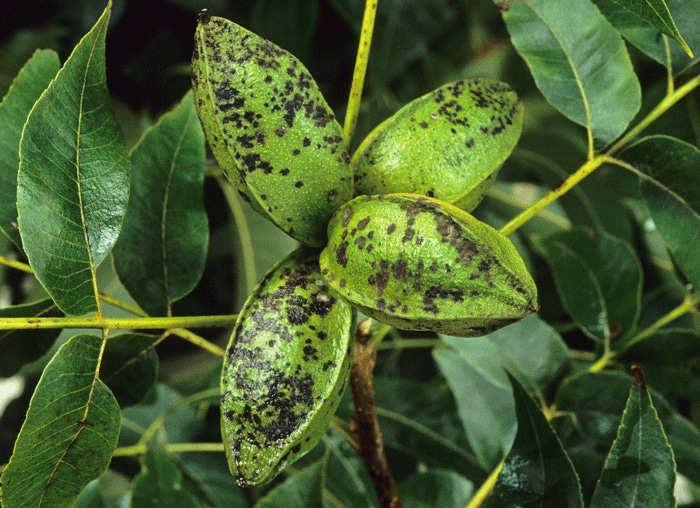September 17, 2014

Researchers know that substances produced by bacteria from the guts of entomopathogenic nematodes (ones that infect insects) can suppress certain plant diseases, including pecan scab, the major disease currently limiting productivity and quality of pecan trees in the southeastern United States. But the specific compounds responsible for the suppression have not been previously identified.
At the Agricultural Research Service’s Fruit and Tree Nut Research Laboratory in Byron, Georgia, plant pathologist Clive Bock and entomologist David Shapiro-Ilan, along with ARS chemist Charles Cantrell and plant pathologist David Wedge, examined chemical extracts of the bacteria to identify the major components responsible for suppressing pecan scab. They found that the extracts most effective against pecan scab came from the bacterium Photorhabdus luminescens (VS strain). Cantrell and Wedge are in ARS’s Natural Products Utilization Research Unit in Oxford, Mississippi.
The extract found to be most toxic to the pecan scab fungus was purified and found to contain trans-cinnamic acid. Laboratory test results showed that trans-cinnamic acid was toxic to the pecan scab fungus in tiny amounts, as low as 148-200 micrograms per milliliter in solid culture and 64 micrograms per milliliter in liquid culture.
“While some host [pecan] resistance is available to reduce the impact of pecan scab, new strains of the pathogen have been able to overcome that resistance,” says Bock. “Conventional chemical fungicides have been widely used to control scab, but sometimes more than 10 sprays are required to ensure adequate control of the disease. As a result, F. effusum is now resistant to at least two classes of fungicides.”
There is also an increasing awareness of the environmental impact of conventional pesticides. “There are important incentives to try to develop alternatives to conventional fungicides—alternatives that are of low environmental risk and that present a lower risk of fungicide resistance developing in the pathogen,” says Bock. These naturally occurring antimicrobial products might offer such an alternative.
You May Also Like




